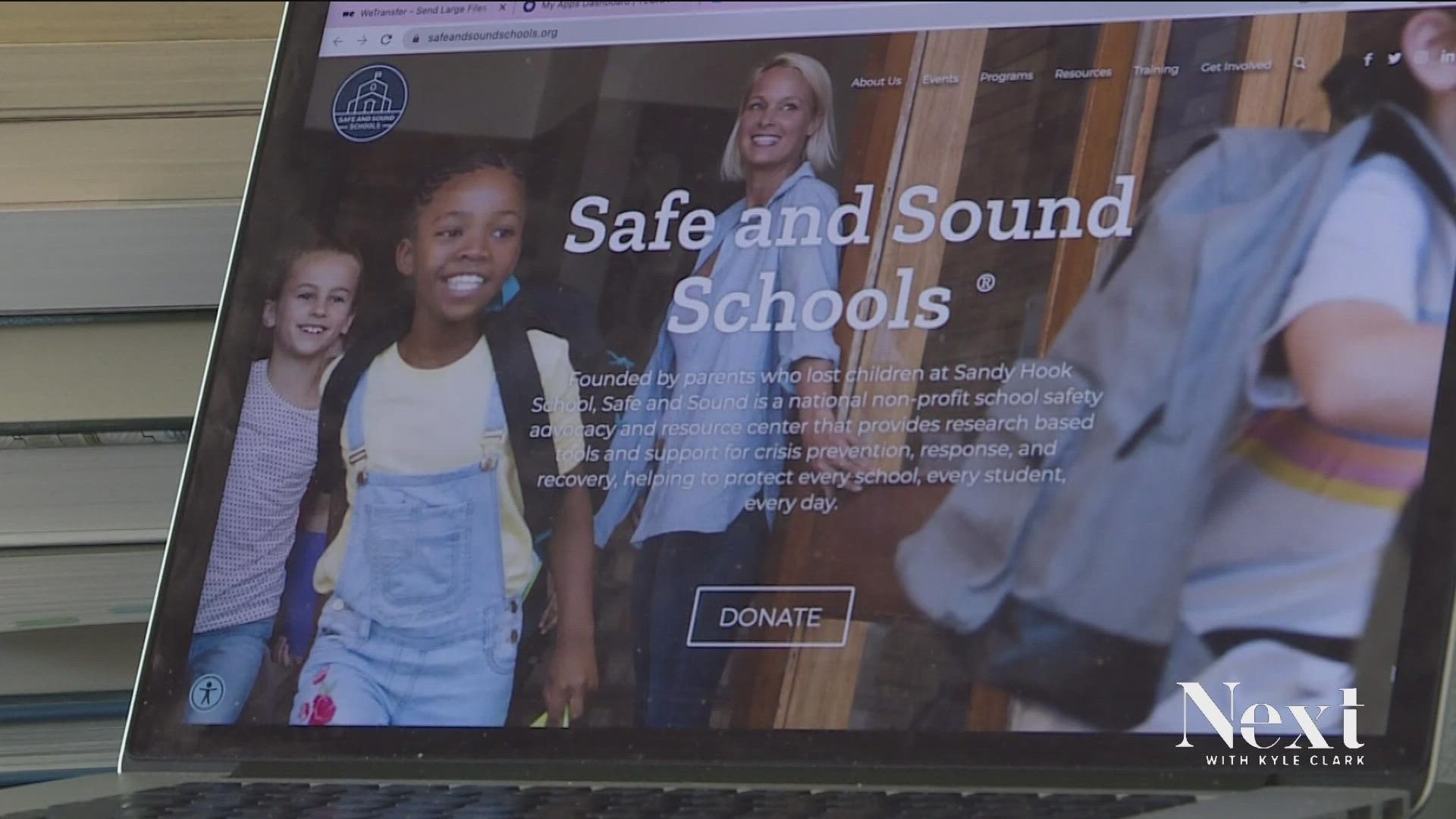DENVER — For all the years we've been focused on school safety and best practices if someone with a gun walks into a classroom, there's a group of kids not always included in the conversation.
The trainings and preparedness plans have not always included children with special needs. So, parents who became advocates and experts in school safety came up with a program that Colorado families can access now.
Michele Gay is the executive director of Safe and Sound Schools Together, and said she kept hearing the same questions.
"We constantly hear parents, educators, ask what about this student? What about my class? What about these kids?" said Gay.
The answer given over and over was not acceptable to her.
"Sadly, for so long it was, 'People will do the best we can. We'll figure it out. Surely someone will help.' We learned, painfully, that's not a plan."
Gay authored her own training for kids and staff with special needs -- an entire program crafted with her Josephine in mind.
"My Josephine was a child with a lot of special needs -- autism, she was non-verbal," she said.
"She loved school, loved her people, her classmates and teachers," said Gay. "The work we do at Safe and Sound Schools is very much in honor of that love of school."
The program, called Especially Safe, is for Josephine who died in the Sandy Hook shooting in 2012.
"I'm enormously proud of her. Of course, I miss her terribly every day," said Gay. "She is so very much with us with the work we do, especially in this program."
The program was built to get schools and communities to think about individual kids and staff with special needs, and what they need in times of crisis.
The idea is broken down into what the program calls "TEAMS."
- T is for transportation and mobility. What is the plan to help a child or staff member in a wheel chair or temporarily in crutches who needs to get to safety or a protective position?
- E is for emotional and mental and behavioral health. Gay brought up that for anyone living with anxiety disorder, autism, or a history of trauma, how do you make sure they are supported and safe during a crisis? "Kids with autism or a trauma history, they could be dysregulated for the rest of the week or month after a drill without that preparation and conversations," said Gay.
- A is for auxiliary communication. Gay said her daughter Josephine was non-verbal and need an iPad or Pex cards to point to and communicate with others about she was thinking, feeling or needing.
- M is for medical history. The program takes into account a person's medical history like diabetes, asthma or seizure disorders, and making sure those medicines are accessible during a crisis.
- S is for security supervision The program takes in into account a child who may wander or is at risk of running away and encourages schools to come up with a plan to keep a close eye on them during a time of crisis to make sure staff knows where they are and are physically safe.
RELATED: Denver Public Schools looking to improve communication with parents during emergency situations
Without a program like this, kids have been left behind.
"Not just my Josephine, a child who couldn't run, hide, or fight or do the typical things a child might be able to do in a crisis. We've heard of numerous stories about special-ed kids in wheel chairs left behind in a drill because they didn't think to plan how to get them from the second story to the first to evacuate," said Gay.
Multiple states, including Colorado, are now adopting the program. It will be available for every school district for free and is already online. It was developed with the help of funds from the JeffCo DeAngelis Foundation.
Those at the forefront of school safety like Frank DeAngelis, the principal at Columbine High School at the time of the 1999 shooting, said it's long overdue.
"Looking at this as time goes on, we have to make modifications, what works and what does not work," DeAngelis said.
He said this program is effective because it trains both teachers and students.
"It's amazing to watch her legacy carried out in such a positive way," said Gay of her daughter.
As for why the program is rolling out now, Gay said it doesn't discount all the hard work going on for school safety but that it's a conversation that's happened for far too long.
"I think this is a question that's been asked for a very long time, and I think the work of emergency preparedness, and training, and prevention, and response and recovering is a lot," said Gay. "I think a lot of teams, schools looked at this category that's like advanced -- we will get there but we're not there yet. We're still trying to shore up the basics. For parents like me, former teachers like me, that's not enough. That's not OK. We can't wait on this."
SUGGESTED VIDEOS: Full Episodes of Next with Kyle Clark

